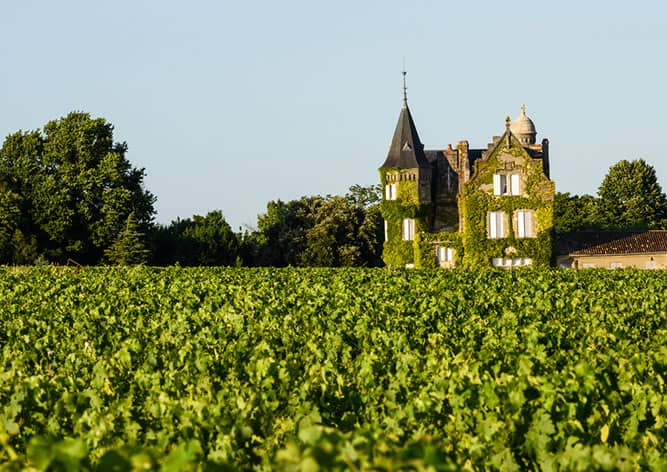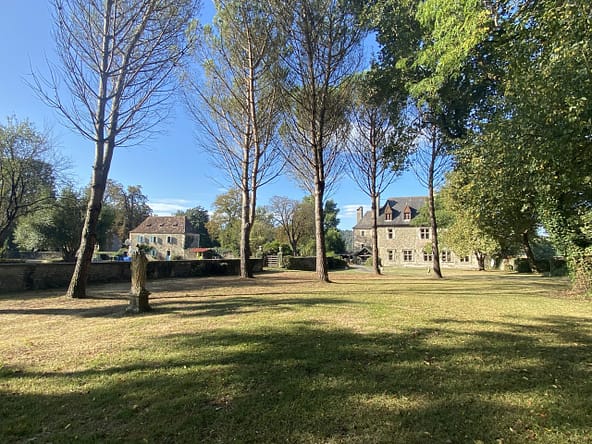Air that’s perfumed with the savory scent of herbs. Strolling hand-in-hand down cobblestone streets at sunset and stopping for a treat at your favorite café. Cuisine that’s unapologetically, sinfully rich. Hiking trails that strive to balance out all those decadent meals – though some of them lead to truffle fields. Mysterious cave paintings that connect you to a time so long ago it’s inconceivable. That feeling like you’re on holiday indefinitely.
It’s clear why southwest France attracts people from all over the world and encourages them to settle down and purchase property here, whether it’s a full-time home or a holiday escape.
Table of Contents
The Climate
Southwest France is lucky enough to enjoy a mild climate throughout most of the year, which means warmth in the spring and summer and relatively high temperatures during the autumn and winter. You’ll also be treated to sunshine almost every day.
During the winter the temperatures can dip, though. Snowfall isn’t unheard of, which is good news for skiers. Winters are short here, too, especially compared to winters in Britain and other areas in Europe. Spring comes in early and autumn stretches for a while.
The Lifestyle
Southwest France is modest, especially when compared to the fast pace of Paris, the tourism in Provence or the glamour of the French Riviera. It’s no less lovely than any of those places, though. People travel to southwest France to dine, to see the cave paintings at Lascaux and mostly to get a taste of authentic, civilized, history-steeped France. When you’re here, you can’t help but feel that this is the way life is supposed to be lived.
The cobblestone villages here are easy to miss if you’re not paying attention – and their charm is definitely worth your attention. One of the most noticeable characteristics of southwest France is how leisurely locals approach their days as there’s no pressure to be constantly clock watching.
There’s a relaxed feeling about work and a strong focus on family and recreation. Nobody will frown if you head outside for a long lunch break or take a few weeks off for an extended holiday. Even the restaurants are unhurried. Don’t be surprised if you’re encouraged to linger with a glass of wine before heading to your table or ordering dinner.
Foie gras seems to be everywhere, from local cookbooks to restaurant menus. It may be traditional, it could have a modern twist or it could even be buried in your dessert.
Getting There
There are nearby airports in Biarritz and Bordeaux, as well as two in the Midi-Pyrénées area: Toulouse-Blagnac Airport and Tarbes-Lourdes-Pyrénées Airport. You can also take the Eurostar, which travels to Biarritz and Bordeaux from major cities like London and Paris. You can hire a car at your airport or train station, too.
Popular Locations to Live in Southwest France
Before we get into specific areas of southwest France, we wanted to make the distinction between Aquitaine and Midi-Pyrénées, which will help as you search for properties. The two areas are located side-by-side, but they’ve both gone through some changes over the past few years.
The former region of Aquitaine included Dordogne, Gironde, Landes, Lot-et-Garonne and Pyrénées-Atlantiques. In 2016, the region was joined by the Poitou-Charentes and Limousin regions. Today, the area is officially called Nouvelle-Aquitaine.
The former region of Midi-Pyrénées included Lot, Aveyron, Tarn, Tarn-et-Garonne, Gers, Hautes- Pyrénées, Haute-Garonne and Ariège. In 2016, the region was joined by Languedoc-Roussillon. Today, the area is officially called Occitanie.
Biarritz
Biarritz was a big surfing destination during the 50s, and while the surf scene is still thriving (and worth a visit on its own), the area has swelled in popularity once again, this time for everything it has to offer.
Head into art galleries or cool boutiques that sell local items. Dine on modern tapas or indulge in a classic French pastry. You’re so close to the water that seafood should be your lunch or dinner of choice, too. Scope out an oyster bar and order a glass of white wine to go with your meal. Afterwards, head to the lighthouse to take in the prettiest views in town.
Don’t let the surf bums fool you: Biarritz is a definite luxury locale with top notch fashion and culture.
Bordeaux
If you’re attracted to Bordeaux for the wine (and who could blame you), make an appointment at a wine estate – there are over 4,000 to choose from. You’ll also want to visit La Cité du Vin, where you can learn about global viticulture history. Plus, the building was designed to look the way wine moves in a glass. There are also 18th century buildings to appreciate if you love architecture, Michelin-starred restaurants and performances at the opera house.
Bordeaux is its loveliest in May and June, which is when the landscape is lush and the area isn’t crowded with tourists. Because of the vineyards and winemaking, though, the most active months are September and October.
Dordogne
The landscapes of Dordogne look like they’re right off the pages of a book: the forests, rivers and vineyards are perfectly bucolic.
Several landmark castles are made for exploring thanks to their collections and museums. There are also English-style rose gardens and prehistoric sites, like caverns and a reconstituted cave village. This is where you can visit Lascaux and see a recreation of its prehistoric wall paintings (the original site was closed to the public in the 60s for preservation purposes).
Foodies should head to Sarlat. The restaurants here are known for their home cooking style, and duck confit and omelets stuffed with mushrooms are just two of the local dishes.
Midi-Pyrénées
The Midi-Pyrénées is a varied, colorful area with a bit of a mountain setting depending on where you are. Being in nature is a huge pastime here. There are high peaks and low valleys, plus vineyards set on the hillside and footpaths that are perfect for hikers. Skiers and snowboarders will have their choice of slopes, too.
The villages are equally as charming, but if you’re in the mood for a livelier setting, head to Toulouse or visit Castres during their annual carnival. Tarn also has several UNESCO sites, making it an ideal place to go if you’re in the mood for a history or culture lesson.
Property Types
Property in southwest France is varied. You can find a small stone residence for just one or two people or a sprawling, renovated farmhouse. You can live like a minimalist or luxuriously. You can create a relaxing haven or work in your own vineyard every day.
The large, elegant stone houses common to the area are called bastides, a nod to 13th and 14th century towns by the same name. It’s common to see medieval architecture in bastides, like an archway that leads to a veranda. Many homes and vineyard properties in southwest France come with outbuildings that can be used for any number of reasons – setup an office, house guests or run a wine shop for tourists.
If privacy is at the top of your list, look for a 16th century castle nestled in ancient forest. Your sprawling home could have a breathtaking staircase, enormous reception rooms, its own chapel or library, and enough bedrooms to host your entire extended family or even rent it out for special events.
HOMEHUNTS property agents are able to select beautiful, luxury properties in the South of France based on your search needs. Search our website and browse our selection of stunning luxury homes.




